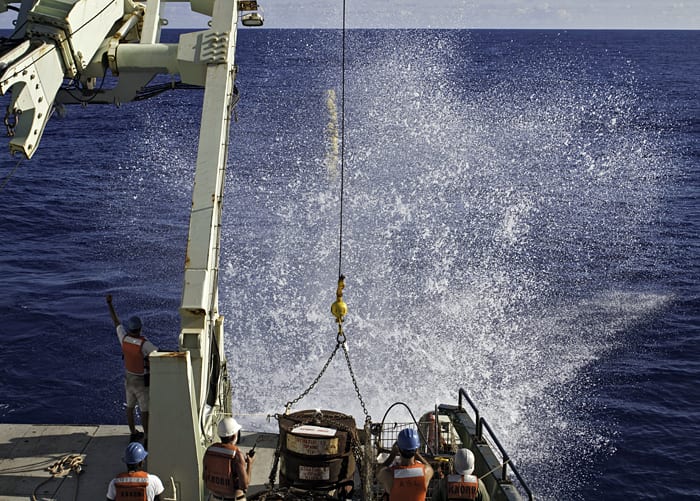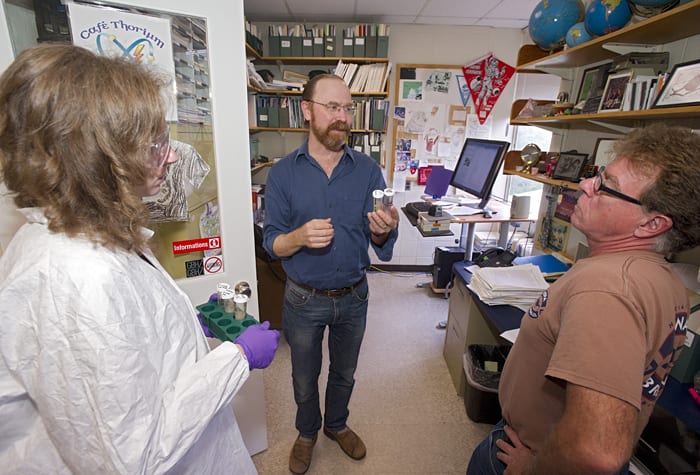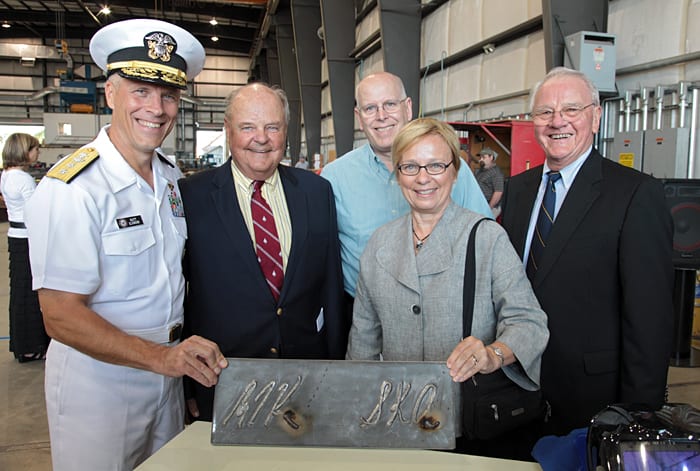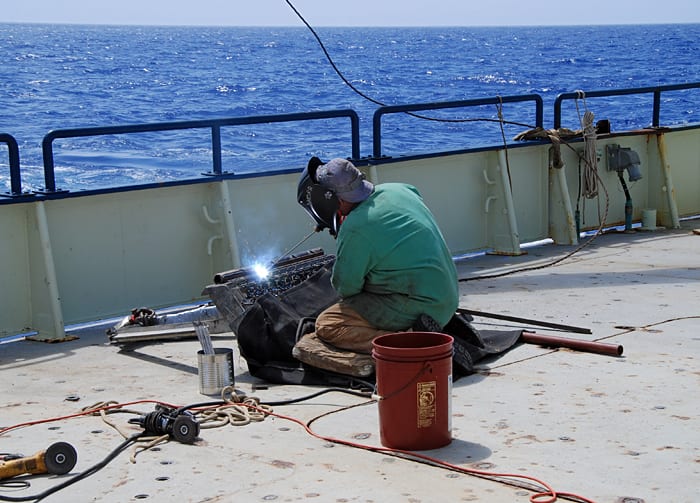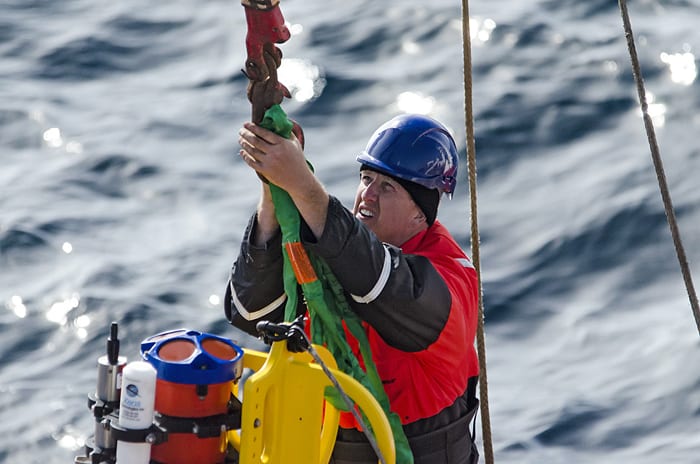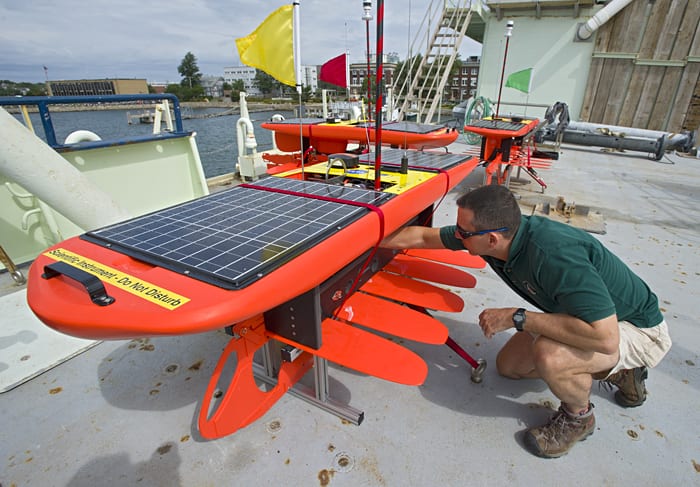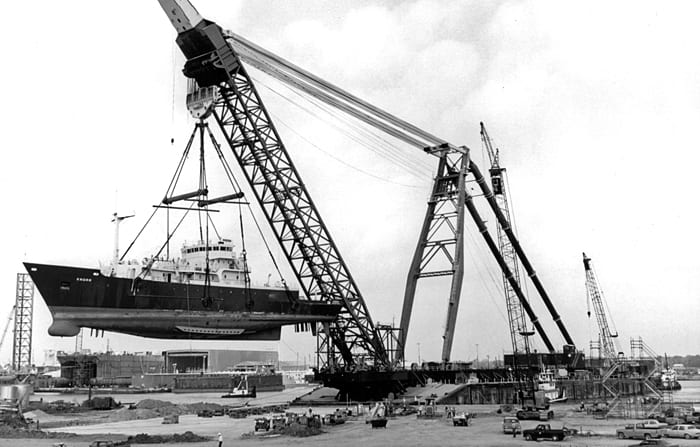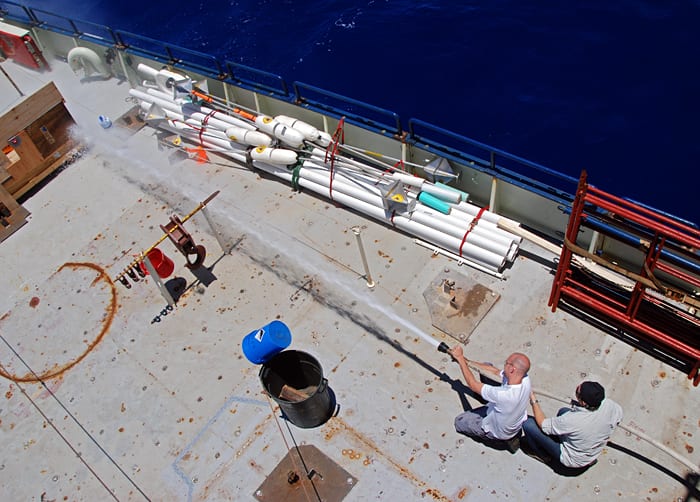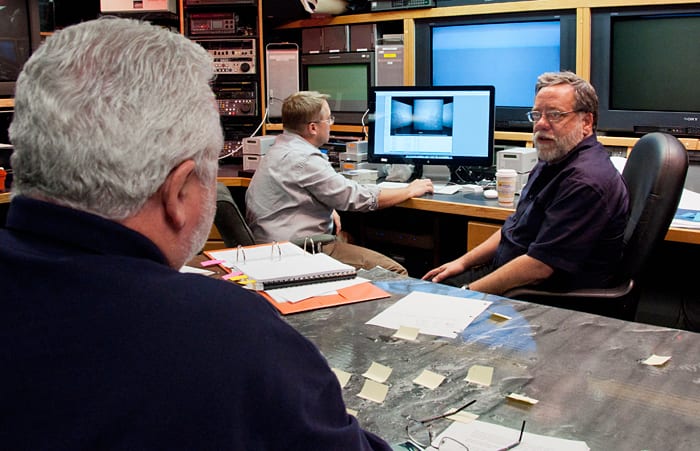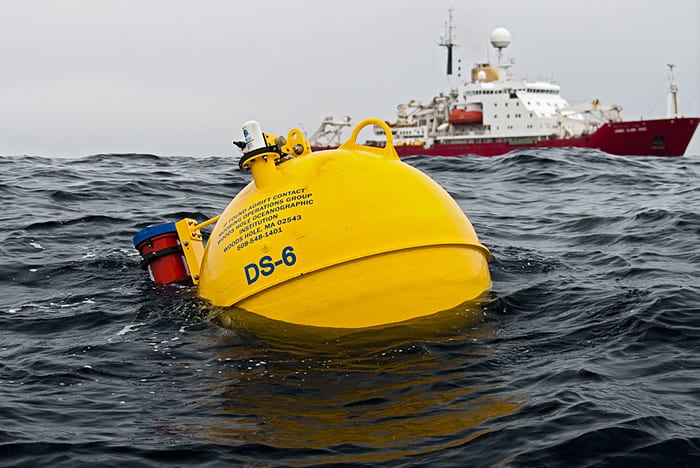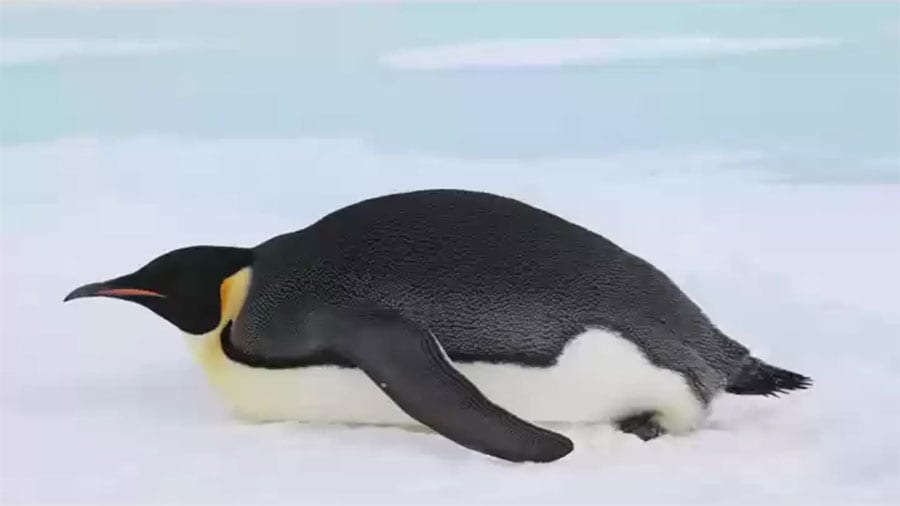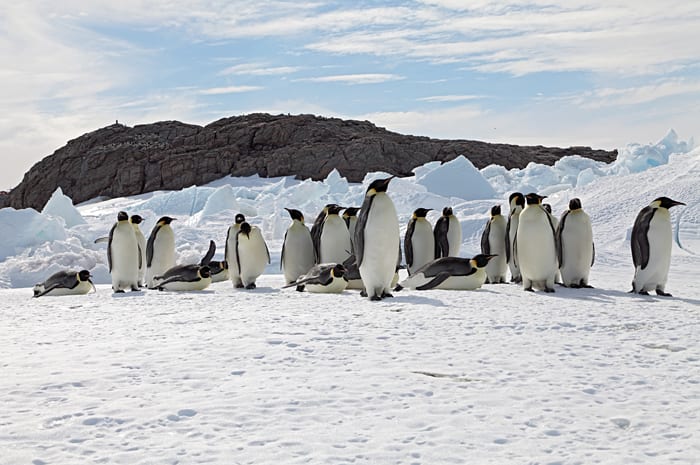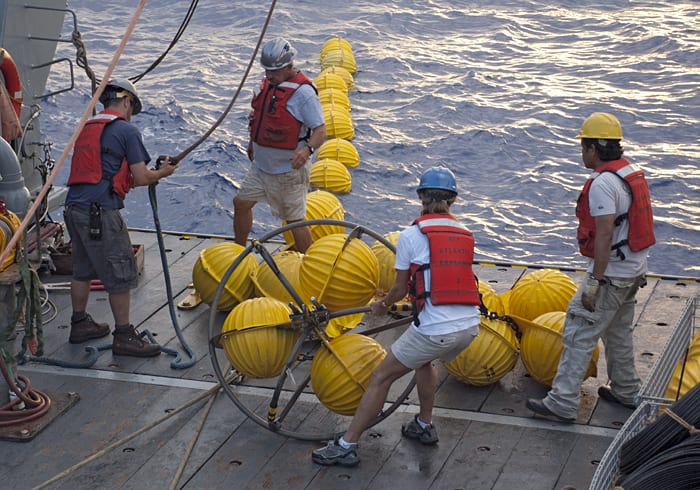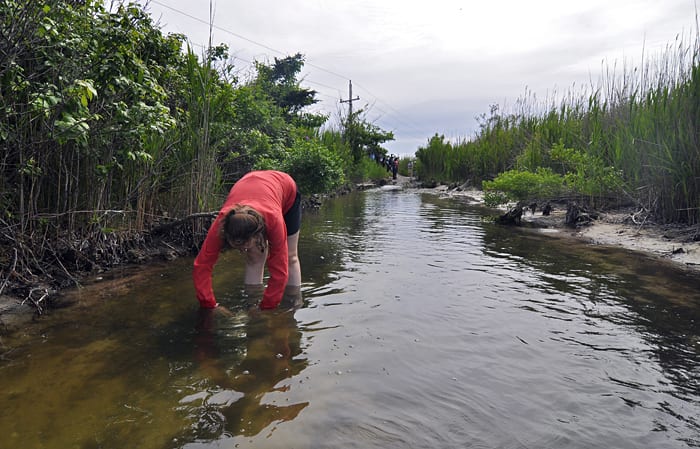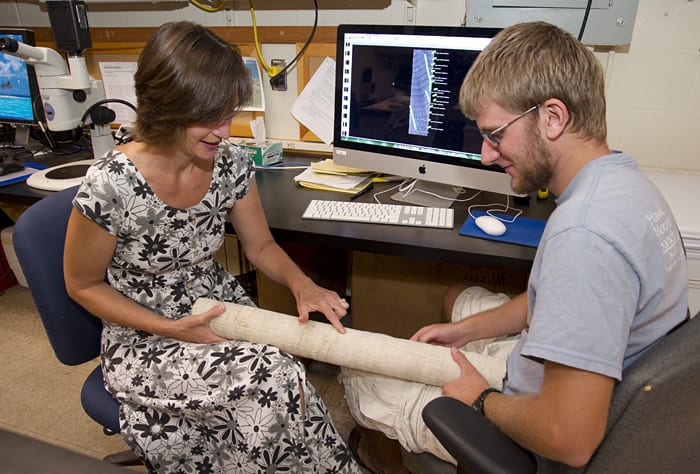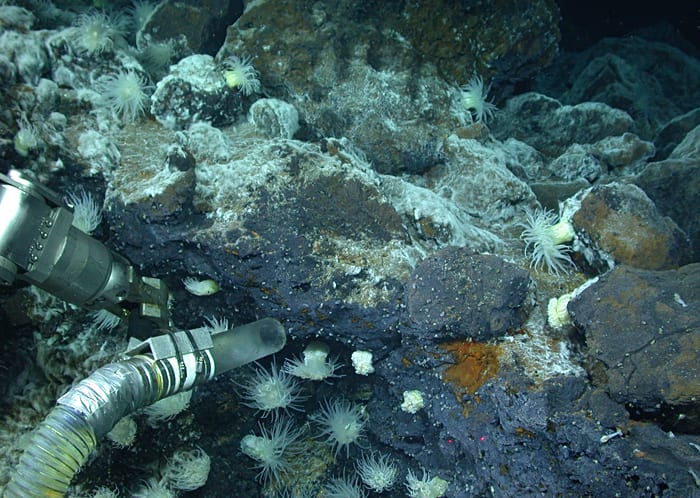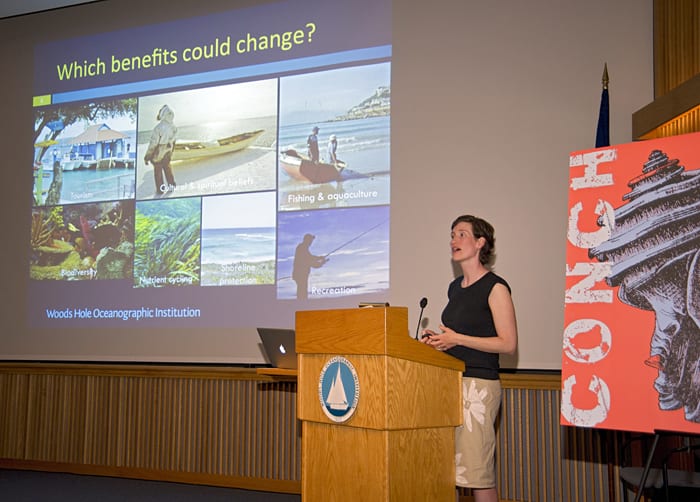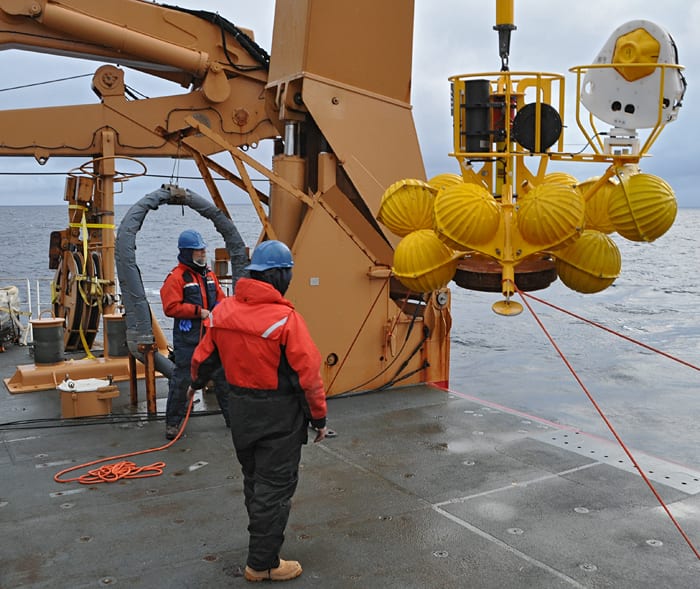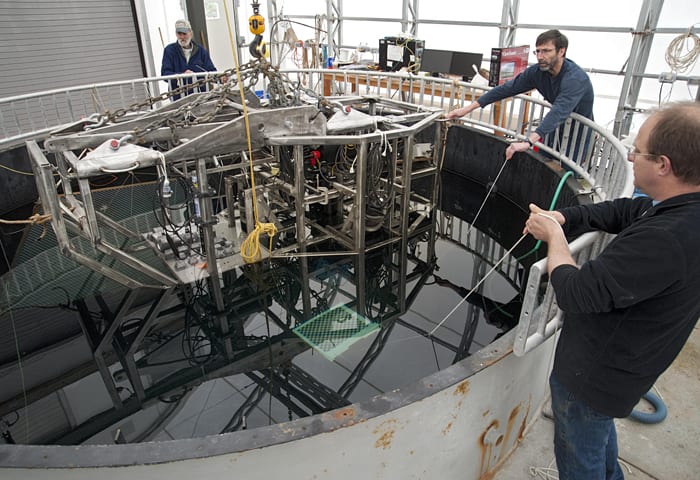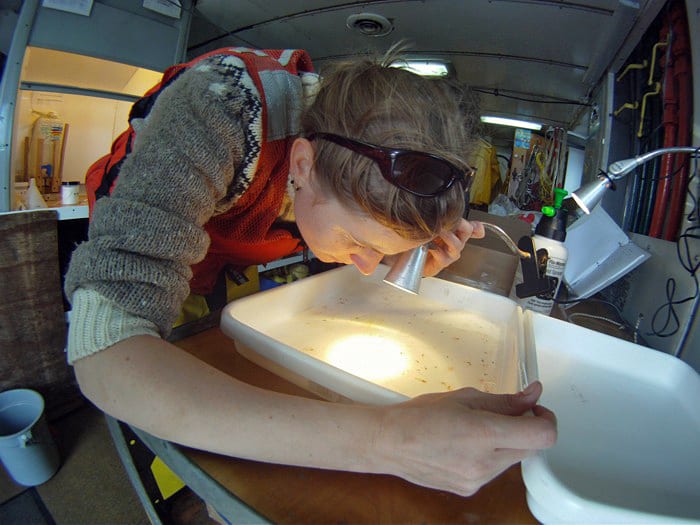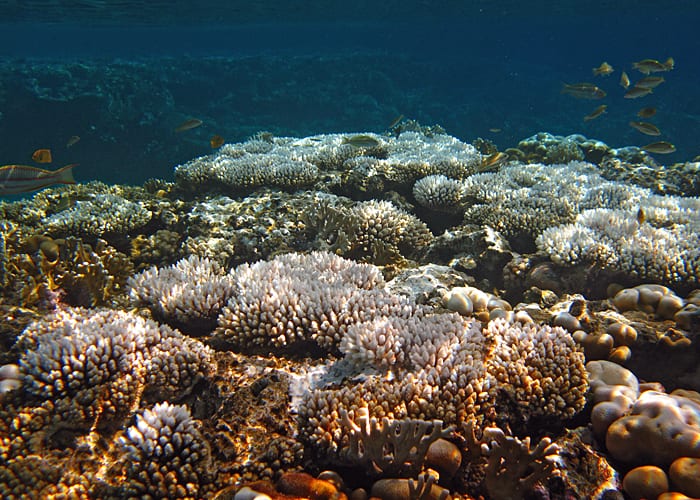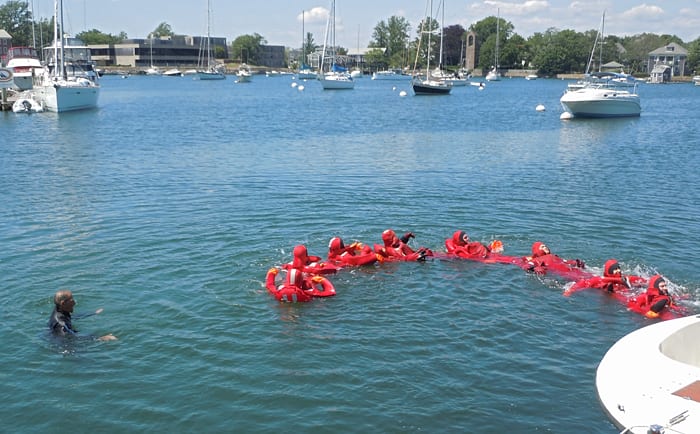Multimedia Items
Making a Splash
A mooring anchor entered the North Atlantic in dramatic fashion last week from the stern of R/V Knorr. The mooring is part of the SPURS (Salinity Processes in the Upper…
Read MoreCold Bath
In July, a group of WHOI scientists and engineers led by Fiamma Straneo and Sarah Das deployed a REMUS 100 “ICEBOT” in Saqqarliup fjord in Southwest Greenland. Their work was part…
Read MoreHot Mud
WHOI marine chemist Ken Buesseler (center) holds two vials of ocean sediment collected from the Pacific seafloor 50 miles from the damaged Japanese nuclear power plant, Fukushima Dai-ichi. In June…
Read MoreFirst of Many Pieces
On August 17, 2012, senior officials from WHOI joined the U.S. Office of Naval Research (ONR) at a ceremony to mark the beginning of construction on the newest ocean research…
Read MoreQuick Fix
Engineer Kyle Covert, who works on the WHOI-operated research vessel Knorr, made modifications to a rock dredge during a month-long cruise to the Mid-Atlantic Ridge this spring. Dredges act like…
Read MoreReady to Go
WHOI technician Steve Murphy prepares a mooring to be lifted off the deck of the British icebreaker James Clark Ross into the water in August. Murphy was part in one of…
Read MoreSmooth Sailing
In August 2012, the US Coast Guard Cutter Healy sailed through unusually light sea ice across Hanna Shoal in the norhtern Chukchi Sea. The cruise was the first in the…
Read MoreTasting Salt
WHOI physical oceanographer Dave Fratantoni inspected one of several wave gliders on the deck of R/V Knorr recently. These three will be deployed later this month during the NASA-sponsored SPURS expedition…
Read MoreRefitting a Stalwart
In 1989, the 20-year-old WHOI-operated research vessel Knorr went through maintenance and upgrades at a shipyard in Amelie, Louisiana. During the refit (shown here), the vessel was cut in half and…
Read MoreTarget Practice
At sea, technicians and crew have to be ready for anything—from fixing broken scientific instruments to keeping the science party and other mariners safe under any circumstances. Here, Reggie Proctor…
Read MoreA Titanic Task
William Lange (right), director of the Advanced Imaging and Visualization Laboratory at WHOI, Dave Conlin (center), chief of the National Parks Service’s Submerged Resources Center, and James Delgado (left), director…
Read MoreIf Found
In the second of two cruises to study the movement of dense water flowing through the Denmark Strait, WHOI oceanographer Bob Pickart returned to the East Greenland coast this summer…
Read MoreEmperor Penguins and Climate Change
By Cherie Winner :: Originally published online August 12, 2014
Read MoreEmperor Penguins & Climate Change
At nearly four feet tall, the emperor penguin is Antarctica’s largest sea bird—and one of the continent’s most iconic animals. Unlike other sea birds, emperor penguins breed and raise their…
Read MoreDynamite Recovery
Jeff Pietro, Scott Worrilow, Chief Scientist Ruth Curry, and an R/V Atlantic Explorer crew member (left to right) recover a mooring line to the fantail of the ship in June.…
Read MoreUp the River
Sylvia Cole, a postdoctoral investigator in the Physical Oceanography Department, deploys a temperature sensor in Trunk River in Falmouth, Mass., as an instructor in the Woods Hole Partnership Education Program (PEP). Sponsored…
Read MoreCore Question
WHOI scientist Anne Cohen and Summer Student Fellow Chris Kelly study the core of a coral taken in Palau, a coral reef archipelago located in the far western tropical Pacific. For…
Read MoreCollect the Dots
Hydrothermal vents three miles down support a variety of life based on chemical energy. This image from a 2012 expedition to the Mid-Cayman Rise led by geochemist Chris German shows…
Read MoreA Changing Ocean
In early August, WHOI marine chemist Sarah Cooley spoke at a public event on ocean acidification, which she calls “a side effect of industrialization.” As the atmospheric concentration of carbon…
Read MoreWorking Under Ice
To work under Arctic ice and in rough seas, researchers rely on bright, buoyant, and tough equipment. In fall 2011, crew and researchers aboard the United States Coast Guard icebreaker…
Read MoreEyes in the Deep
Norman Vine, Jonathan Howland, Hugh Popenoe (left to right), and Scott Gallager (not pictured) use a test tank in Gallager’s lab at WHOI’s Environmental Systems Laboratory in May to calibrate the…
Read MoreQuick Hands, Light Work
WHOI biologist Amy Maas uses a quick, steady hand to pick out zooplankton called pteropods from a sloshing tray aboard a moving ship, not an easy task as they are only…
Read MoreCorals in a Warming Ocean
Reef-building corals contain algae cells in their tissues that nourish them and give them their distinctive color. High water temperatures cause corals to release their algae and lose their color,…
Read MoreSynchronized Floating
Instructor Joe Mokry (left) of Ocean Rescue Systems International teaches students in a boat safety course at Woods Hole Oceanographic Institution strategies for staying alive should they ever have to…
Read More
